John Hong Lin
age ~60
from Parker, CO
- Also known as:
-
- John H Lin
- Jonh Lin
- James Gaines
John Lin Phones & Addresses
- Parker, CO
- Chino Hills, CA
- Aurora, CO
- Fontana, CA
- Voorhees, NJ
- Carol Stream, IL
- Lakewood, NJ
- Roselle Park, NJ
- Parlin, NJ
Work
-
Company:Tanning spa
-
Address:555 E Ocean Blvd, Long Beach, CA 90802
-
Phones:5624358079
-
Position:President
-
Industries:Miscellaneous Personal Services
Real Estate Brokers

John Lin, Rancho Cucamonga CA BRE of CA
view sourceSpecialties:
Buyer's Agent
Listing Agent
Property Management
Listing Agent
Property Management
Work:
StarMax Realty
9785 Base Line Road, Rancho Cucamonga, CA 91730
9493853855 (Office)
9785 Base Line Road, Rancho Cucamonga, CA 91730
9493853855 (Office)
Licenses:
01929215 (BRE of CA)
Languages:
Mandarin

John Lin, City Of Industry CA
view sourceSpecialties:
Buyer's Agent
Listing Agent
Listing Agent
Work:
LC Enterprise Group Inc.
14632 E. Nelson Ave. #B, City Of Industry, CA 91744
6263333552 (Office)
14632 E. Nelson Ave. #B, City Of Industry, CA 91744
6263333552 (Office)
Lawyers & Attorneys

John Chun Lin - Lawyer
view sourceAddress:
Jones Day
277123399x (Office)
277123399x (Office)
Licenses:
New York - Currently registered 2000
Education:
Kings College London, University of London

John Chun Lin - Lawyer
view sourceLicenses:
California - Active 2002
Name / Title
Company / Classification
Phones & Addresses
Wholesome Wellness Centre
Holistic Health Services
Holistic Health Services
2677 Broadway West, Vancouver, BC V6K 2G2
6047099908
6047099908
Owner
Lavender Boutique
PDJS Enterprises LLC
Clothing - Retail
PDJS Enterprises LLC
Clothing - Retail
410 Peachtree Pkwy, Suite 138, Cumming, GA 30041-7066
6785139990
6785139990
President
Tanning Spa
Miscellaneous Personal Services
Miscellaneous Personal Services
555 E Ocean Blvd, Long Beach, CA 90802
Executive
Cookie Lee, Inc.
Jewelry, Watches, Precious Stones, and Precio...
Jewelry, Watches, Precious Stones, and Precio...
18009 Sky Park Cir Ste G, Irvine, CA 92614
Owner
John Lin
Manifold Business Forms
Manifold Business Forms
684 Locust St, Pasadena, CA 91101
COO
John Lin
Hotels and Motels
Hotels and Motels
1389 Robert Ct, Brea, CA 92821
Owner
Netpackbag.com
Advertising
Advertising
4339 Rowland Ave, El Monte, CA 91731
Website: netpackbag.com
Website: netpackbag.com
Manager
China Business Chain Group, Llc
Lubricating Oils and Greases
Lubricating Oils and Greases
317 W. Main St. - Alhambra, Pomona, CA 91797
Us Patents
-
Baseband Controller In A Wireless Local Area Network
view source -
US Patent:7123877, Oct 17, 2006
-
Filed:Nov 8, 2001
-
Appl. No.:10/007435
-
Inventors:John Lin - Downey CA, US
-
Assignee:Broadcom Corporation - Irvine CA
-
International Classification:H04B 7/00
H04Q 7/20 -
US Classification:455 412, 455507, 455514, 455517
-
Abstract:A baseband controller includes a microsequencer that is formed to include special hardware resources and a configuration that facilitates using the micro-sequencer as a real-time baseband controller. The microsequencer includes a 72-bit correlator that way also be used as an accumulator. The correlator is able to communicate with a 72-bit arithmetic logic unit, enabling the correlator to act as an accumulator, as well as a plurality of clocks and timers that facilitate the timing functionality to satisfy Bluetooth specifications. More specifically, the microsequencer includes at least four clocks and eight times. The four clocks include an externally driven Bluetooth clock, an externally driven real-time clock, a native Bluetooth clock and a native real-time clock. The microsequencer further includes at least four registers for temporarily storing computational data. The storage registers have different sizes for storing different sized packets of computational data.
-
Scalable Synchronous Packet Transmit Scheduler
view source -
US Patent:7151745, Dec 19, 2006
-
Filed:Nov 8, 2001
-
Appl. No.:10/008873
-
Inventors:John Lin - Downey CA, US
Paris Chen - Walnut CA, US -
Assignee:Broadcom Corporation - Irvine CA
-
International Classification:H04J 1/16
H04J 3/14 -
US Classification:370230, 370235
-
Abstract:A baseband controller system creates and maintains a schedule of synchronized events and reviews the schedule as a part of determining whether to initiate a transmission of a non-synchronous event. One aspect is to avoid a possibility of collision between synchronized and non-synchronized communication events. The schedule of synchronized events are evaluated in relation to the present time and determine whether a non-synchronized event may be transmitted without the likelihood of a collision. The transmission determination includes evaluating future time periods to see if a synchronized event is scheduled during a time period in which the non-synchronized event would continue to be transmitted for those non-synchronized events that span two or more defined time periods in length.
-
Baseband Controller In A Wireless Local Area Network
view source -
US Patent:7583932, Sep 1, 2009
-
Filed:Oct 9, 2006
-
Appl. No.:11/539783
-
Inventors:John Lin - Downey CA, US
-
Assignee:Broadcom Corporation - Irvine CA
-
International Classification:H04B 7/00
-
US Classification:455 412, 455 413, 455507, 455514, 455517
-
Abstract:A baseband controller includes a microsequencer with special hardware resources circuitry and a configuration that supports real-time Bluetooth functionality for an upper limit of Bluetooth slave devices. The microsequencer includes a 72-bit correlator that may also be used as an accumulator, wherein the topology provides that the correlator can communicate with a 72-bit arithmetic logic unit that correspondingly enables the correlator to act as an accumulator. The microsequencer also includes a plurality of clocks and timers for facilitating Bluetooth timing functionality, and at least four registers for temporarily storing computational data, where each of the storage registers have different sizes for accommodating different-sized packets of computational data.
-
Scalable Synchronous Packet Transmit Scheduler
view source -
US Patent:7756100, Jul 13, 2010
-
Filed:Dec 18, 2006
-
Appl. No.:11/612468
-
Inventors:John Lin - Downey CA, US
Paris Chen - Walnut CA, US -
Assignee:Broadcom Corporation - Irvine CA
-
International Classification:H04B 7/212
-
US Classification:370347, 3703954, 370468, 370346, 4554521
-
Abstract:A baseband controller system creates and maintains a schedule of synchronized events and reviews the schedule as a part of determining whether to initiate a transmission of a non-synchronous event (one that is not time sensitive, for example, e-mail). One aspect of the present invention is to create a system and method that avoids a possibility of collision between synchronized and non-synchronized communication events. A synchronized event is a scheduled transmission of time sensitive data such as what is often known as continuous bit rate data. Examples include video and voice wherein a collision (inability to transmit the continuous bit rate data) may result in degradation of signal quality at the receiving end. The inventive system and method evaluate the schedule of synchronized events in relation to the present time and determine whether a non-synchronized event may be transmitted without the likelihood of a collision. Making the determination that such a transmission may occur includes evaluating future time periods to see if a synchronized event is scheduled during a time period in which the non-synchronized event would continue to be transmitted for those non-synchronized events that span two or more defined time periods in length.
-
Wireless Data Communications Using Fifo For Synchronization Memory
view source -
US Patent:7929935, Apr 19, 2011
-
Filed:Jun 2, 2008
-
Appl. No.:12/131676
-
Inventors:John H. Lin - Downey CA, US
Sherman Lee - Rancho Palso Verde CA, US
Vivian Y. Chou - Alhambra CA, US -
Assignee:Broadcom Corporation - Irvine CA
-
International Classification:H04B 1/06
-
US Classification:455259, 375372, 711100
-
Abstract:A microprocessor system architecture is disclosed which allows for the selective execution of programmed ROM microcode or, alternatively, RAM microcode if there has been a correction or update made to the ROM microcode originally programmed into the system. Patched or updated RAM microcode is utilized or executed only to the extent of changes to the ROM microcode, otherwise the ROM microcode is executed in its normal fashion. When a patch is received, it is loaded into system RAM along with instructions or other appropriate signals to direct the execution of the patched or updated microcode from RAM instead of the existing ROM microcode. Various methods are presented for selecting the execution of the appropriate microcode depending upon whether there have been changes made to it.
-
Baseband Controller In A Micronetwork
view source -
US Patent:7974578, Jul 5, 2011
-
Filed:Aug 31, 2009
-
Appl. No.:12/551359
-
Inventors:John Lin - Downey CA, US
-
Assignee:Broadcom Corporation - Irvine CA
-
International Classification:H04B 7/00
-
US Classification:455 412, 455 413, 455507, 455514, 455517
-
Abstract:A baseband controller includes a microsequencer with special hardware resources circuitry and a configuration that supports real-time micronetwork functionality for an upper limit of slave devices. The microsequencer includes a correlator that may also be used as an accumulator, wherein the topology provides that the correlator can communicate with an arithmetic logic unit that correspondingly enables the correlator to act as an accumulator. The microsequencer also includes a plurality of clocks and timers for facilitating micronetwork timing functionality, and at registers for temporarily storing computational data, where each of the storage registers have different sizes for accommodating different-sized packets of computational data.
-
Cryogenic Propellant Depot And Deployable Sunshield
view source -
US Patent:8196869, Jun 12, 2012
-
Filed:Dec 29, 2011
-
Appl. No.:13/340333
-
Inventors:Bernard Friedrich Kutter - Centennial CO, US
Frank Charles Zegler - Centennial CO, US
Cliff E. Willey - Frederica DE, US
John K. Lin - Frederica DE, US
Mohamed M. Ragab - Centennial CO, US
Michael W. Dew - Centennial CO, US -
Assignee:United Launch Alliance, LLC - Englewood CO
-
International Classification:B64G 1/52
B64G 1/58
B64G 1/00 -
US Classification:2441717, 2441723, 2441725, 2441581
-
Abstract:A cryogenic propellant depot and sunshield are provided for operation in earth orbit to fuel or refuel other space vehicles. The sunshield is deployed to effectively mitigate solar radiation emanating from the earth and the sun thereby providing a long term storage solution for cryogenic fluids prone to boil-off. The depot has supporting subsystems to include station keeping equipment and communication equipment so that the depot can be independently controlled. Inflatable booms are used to deploy the sunshield in a desired pattern around the depot.
-
Master To Multi-Slave Asynchronous Transmit Fifo
view source -
US Patent:20030086485, May 8, 2003
-
Filed:Nov 8, 2001
-
Appl. No.:10/008872
-
Inventors:John Lin - Downey CA, US
Vivian Chou - Torrance CA, US -
International Classification:H04B001/38
H04L005/16 -
US Classification:375/219000
-
Abstract:A baseband controller system includes a master to a multi-slave asynchronous transmit FIFO structure that enables the traffic to all slaves to be independent of each other in a manner that reduces the shortcomings of traditional FIFO structures. The inventive FIFO structure includes a plurality of pointer blocks wherein each of the FIFO pointer blocks comprises a plurality of one-byte pointers that point to command blocks. The command blocks, in turn, define an address that point to a starting address of a data block. Accordingly, because the FIFO pointer blocks only include an address for a pointer to a command block instead of the actual data that is to be transmitted, the size of the FIFO structure is dramatically reduced. Thus, the transmission order for the data blocks is determined by ordering the pointers instead of by ordering the data itself.
License Records
John L Lin
License #:
MT039445T - Expired
Category:
Medicine
Type:
Graduate Medical Trainee
Resumes

John Lin Pasadena, CA
view sourceWork:
University of Southern California
Mar 2011 to 2000
Postdoctoral Scholar in Economics California Institute of Technology
Pasadena, CA
Jun 1999 to Jun 2004
Lead Programmer Analyst
Mar 2011 to 2000
Postdoctoral Scholar in Economics California Institute of Technology
Pasadena, CA
Jun 1999 to Jun 2004
Lead Programmer Analyst
Education:
School of Information
Ann Arbor, MI
2005 to 2011
PhD in Information California Institute of Technology
Pasadena, CA
1994 to 1999
BS in Economics
Ann Arbor, MI
2005 to 2011
PhD in Information California Institute of Technology
Pasadena, CA
1994 to 1999
BS in Economics

John Lin Chandler, AZ
view sourceWork:
Orbital Sciences
Mar 2012 to 2000
Associate Materials Engineer California Steel Industries
Fontana, CA
Mar 2011 to Sep 2011
Metallurgical Engineer Intern UCLA Ceramics Laboratory
Los Angeles, CA
Mar 2010 to Jun 2010
Student UCLA Ceramics Laboratory
Mar 2010 to Jun 2010
External Vice President UCLA Ceramics Laboratory
Mar 2010 to Jun 2010
Events Chair
Mar 2012 to 2000
Associate Materials Engineer California Steel Industries
Fontana, CA
Mar 2011 to Sep 2011
Metallurgical Engineer Intern UCLA Ceramics Laboratory
Los Angeles, CA
Mar 2010 to Jun 2010
Student UCLA Ceramics Laboratory
Mar 2010 to Jun 2010
External Vice President UCLA Ceramics Laboratory
Mar 2010 to Jun 2010
Events Chair
Education:
UCLA
Los Angeles, CA
2007
Bachelor of Science in Materials Science Engineering
Los Angeles, CA
2007
Bachelor of Science in Materials Science Engineering
Medicine Doctors

Dr. John L Lin, Orange CA - MD (Doctor of Medicine)
view sourceSpecialties:
Anesthesiology
Age:
45
Address:
500 S Main St Suite 1210, Orange, CA 92868
7146195383 (Phone)
CALIFORNIA ANESTHESIOLOGY ASSOCIATES
400 N Tustin Ave Suite 400, Santa Ana, CA 92705
9494171812 (Phone), 7144154053 (Fax)
7146195383 (Phone)
CALIFORNIA ANESTHESIOLOGY ASSOCIATES
400 N Tustin Ave Suite 400, Santa Ana, CA 92705
9494171812 (Phone), 7144154053 (Fax)
Certifications:
Anesthesiology, 2010
Awards:
Healthgrades Honor Roll
Languages:
English
Education:
Medical School
Temple University
Temple University

Dr. John Y Lin, Alhambra CA - MD (Doctor of Medicine)
view sourceSpecialties:
Family Medicine
Address:
Alhambra Hospital Medical Center Emrgncy
100 S Raymond Ave, Alhambra, CA 91801
6264584792 (Phone)
Rowan Family Medical Clinic
1148 S Rowan Ave Suite 2, Los Angeles, CA 90023
3232616173 (Phone)
Physicians Choice
1701 Santa Anita Ave, South El Monte, CA 91733
6265797777 (Phone)
100 S Raymond Ave, Alhambra, CA 91801
6264584792 (Phone)
Rowan Family Medical Clinic
1148 S Rowan Ave Suite 2, Los Angeles, CA 90023
3232616173 (Phone)
Physicians Choice
1701 Santa Anita Ave, South El Monte, CA 91733
6265797777 (Phone)
Languages:
English
Chinese
Spanish
Chinese
Spanish
Education:
Medical School
Universidad Autonoma De Guadalajara, Facultad De Medicina
Graduated: 1978
Medical School
North Oakland Med Center
Graduated: 1978
Universidad Autonoma De Guadalajara, Facultad De Medicina
Graduated: 1978
Medical School
North Oakland Med Center
Graduated: 1978

Dr. John Lin, Alhambra CA - MD (Doctor of Medicine)
view sourceSpecialties:
Pediatrics
Address:
Shen Medical Group
100 S Raymond Ave, Alhambra, CA 91801
6264584792 (Phone)
Emergency Medical Mgmt Assocs
1701 Santa Anita Ave, South El Monte, CA 91733
9096298088 (Phone)
Rowan Family Medical Clinic
1148 S Rowan Ave Suite 2, Los Angeles, CA 90023
3232616173 (Phone)
100 S Raymond Ave, Alhambra, CA 91801
6264584792 (Phone)
Emergency Medical Mgmt Assocs
1701 Santa Anita Ave, South El Monte, CA 91733
9096298088 (Phone)
Rowan Family Medical Clinic
1148 S Rowan Ave Suite 2, Los Angeles, CA 90023
3232616173 (Phone)
Languages:
English
Hospitals:
Shen Medical Group
100 S Raymond Ave, Alhambra, CA 91801
Rowan Family Medical Clinic
1148 S Rowan Ave Suite 2, Los Angeles, CA 90023
Emergency Medical Mgmt Assocs
1701 Santa Anita Ave, South El Monte, CA 91733
Greater El Monte Community Hospital
1701 Santa Anita Avenue, South El Monte, CA 91733
100 S Raymond Ave, Alhambra, CA 91801
Rowan Family Medical Clinic
1148 S Rowan Ave Suite 2, Los Angeles, CA 90023
Emergency Medical Mgmt Assocs
1701 Santa Anita Ave, South El Monte, CA 91733
Greater El Monte Community Hospital
1701 Santa Anita Avenue, South El Monte, CA 91733
Education:
Medical School
University of California At Los Angeles
Graduated: 1991
University of California At Los Angeles
Graduated: 1991

John Lin
view sourceSpecialties:
Emergency Medicine
Work:
Emergency Medical Management Associates
1701 Santa Anita Ave, South El Monte, CA 91733
9096298088 (phone), 9096298755 (fax)
Shen Medical Group
100 S Raymond Ave, Alhambra, CA 91801
6264584792 (phone), 6264584728 (fax)
1701 Santa Anita Ave, South El Monte, CA 91733
9096298088 (phone), 9096298755 (fax)
Shen Medical Group
100 S Raymond Ave, Alhambra, CA 91801
6264584792 (phone), 6264584728 (fax)
Education:
Medical School
University of California, Los Angeles David Geffen School of Medicine
Graduated: 1991
University of California, Los Angeles David Geffen School of Medicine
Graduated: 1991
Procedures:
Vaccine Administration
Conditions:
Fractures, Dislocations, Derangement, and Sprains
Skin and Subcutaneous Infections
Acute Bronchitis
Acute Pharyngitis
Acute Sinusitis
Skin and Subcutaneous Infections
Acute Bronchitis
Acute Pharyngitis
Acute Sinusitis
Languages:
English
Description:
Dr. Lin graduated from the University of California, Los Angeles David Geffen School of Medicine in 1991. He works in Alhambra, CA and 1 other location and specializes in Emergency Medicine. Dr. Lin is affiliated with Alhambra Hospital Medical Center, Garfield Medical Center, Greater El Monte Community Hospital and Silver Lake Medical Center.

John S. Lin
view sourceSpecialties:
Cardiovascular Disease
Work:
Sante Community PhysiciansJohn S Lin MD Inc
938 N Cherry St, Tulare, CA 93274
5596863481 (phone), 5596867160 (fax)
938 N Cherry St, Tulare, CA 93274
5596863481 (phone), 5596867160 (fax)
Education:
Medical School
Inst of Med I, Yangon, Myanmar
Graduated: 1971
Inst of Med I, Yangon, Myanmar
Graduated: 1971
Procedures:
Cardiac Catheterization
Cardiac Stress Test
Cardioversion
Continuous EKG
Echocardiogram
Electrocardiogram (EKG or ECG)
Pacemaker and Defibrillator Procedures
Cardiac Stress Test
Cardioversion
Continuous EKG
Echocardiogram
Electrocardiogram (EKG or ECG)
Pacemaker and Defibrillator Procedures
Conditions:
Acute Bronchitis
Acute Myocardial Infarction (AMI)
Acute Sinusitis
Acute Upper Respiratory Tract Infections
Angina Pectoris
Acute Myocardial Infarction (AMI)
Acute Sinusitis
Acute Upper Respiratory Tract Infections
Angina Pectoris
Languages:
English
Description:
Dr. Lin graduated from the Inst of Med I, Yangon, Myanmar in 1971. He works in Tulare, CA and specializes in Cardiovascular Disease. Dr. Lin is affiliated with Tulare Regional Medical Center.

John Lin
view sourceSpecialties:
General Surgery
Work:
Northshore University Health System
2050 Pfingsten Rd STE 330, Glenview, IL 60026
8475701700 (phone), 8478325122 (fax)
NorthShore Medical GroupNorthShore Medical Group Lake Bluff North
101 Waukegan Rd STE 1200, Lake Bluff, IL 60044
8472958500 (phone), 8472958501 (fax)
2050 Pfingsten Rd STE 330, Glenview, IL 60026
8475701700 (phone), 8478325122 (fax)
NorthShore Medical GroupNorthShore Medical Group Lake Bluff North
101 Waukegan Rd STE 1200, Lake Bluff, IL 60044
8472958500 (phone), 8472958501 (fax)
Education:
Medical School
Northwestern University Feinberg School of Medicine
Graduated: 1994
Northwestern University Feinberg School of Medicine
Graduated: 1994
Procedures:
Arthrocentesis
Continuous EKG
Destruction of Benign/Premalignant Skin Lesions
Electrocardiogram (EKG or ECG)
Hearing Evaluation
Skin Tags Removal
Vaccine Administration
Continuous EKG
Destruction of Benign/Premalignant Skin Lesions
Electrocardiogram (EKG or ECG)
Hearing Evaluation
Skin Tags Removal
Vaccine Administration
Conditions:
Abdominal Hernia
Abnormal Vaginal Bleeding
Acne
Acute Conjunctivitis
Acute Pharyngitis
Abnormal Vaginal Bleeding
Acne
Acute Conjunctivitis
Acute Pharyngitis
Languages:
English
Description:
Dr. Lin graduated from the Northwestern University Feinberg School of Medicine in 1994. He works in Glenview, IL and 1 other location and specializes in General Surgery. Dr. Lin is affiliated with Glenbrook Hospital, Highland Park Hospital, Northshore University Health System Evanston Hospital and Northshore University HealthSystem.

John L. Lin
view sourceSpecialties:
Physical Medicine & Rehabilitation
Work:
Shepherd Center
2020 Peachtree Rd NW, Atlanta, GA 30309
4043522020 (phone), 4043547479 (fax)
2020 Peachtree Rd NW, Atlanta, GA 30309
4043522020 (phone), 4043547479 (fax)
Education:
Medical School
Medical University of South Carolina College of Medicine
Graduated: 1996
Medical University of South Carolina College of Medicine
Graduated: 1996
Procedures:
Neurological Testing
Physical Therapy
Physical Therapy Evaluation
Physical Therapy
Physical Therapy Evaluation
Conditions:
Diabetes Mellitus (DM)
Fractures, Dislocations, Derangement, and Sprains
Hypertension (HTN)
Intervertebral Disc Degeneration
Intracranial Injury
Fractures, Dislocations, Derangement, and Sprains
Hypertension (HTN)
Intervertebral Disc Degeneration
Intracranial Injury
Languages:
English
Description:
Dr. Lin graduated from the Medical University of South Carolina College of Medicine in 1996. He works in Atlanta, GA and specializes in Physical Medicine & Rehabilitation. Dr. Lin is affiliated with Shepherd Center Inc.

John C. Lin
view sourceSpecialties:
Urology
Work:
Sunrise Urology
3303 S Lindsay Rd STE 121, Gilbert, AZ 85297
4805079600 (phone), 4805079610 (fax)
3303 S Lindsay Rd STE 121, Gilbert, AZ 85297
4805079600 (phone), 4805079610 (fax)
Education:
Medical School
Saint Louis University School of Medicine
Graduated: 1997
Saint Louis University School of Medicine
Graduated: 1997
Procedures:
Circumcision
Kidney Stone Lithotripsy
Cystoscopy
Cystourethroscopy
Prostate Biopsy
Transurethral Resection of Prostate
Urinary Flow Tests
Vaginal Repair
Vasectomy
Kidney Stone Lithotripsy
Cystoscopy
Cystourethroscopy
Prostate Biopsy
Transurethral Resection of Prostate
Urinary Flow Tests
Vaginal Repair
Vasectomy
Conditions:
Benign Prostatic Hypertrophy
Calculus of the Urinary System
Male Infertility
Bladder Cancer
Chancroid
Calculus of the Urinary System
Male Infertility
Bladder Cancer
Chancroid
Languages:
Chinese
English
German
Spanish
English
German
Spanish
Description:
Dr. Lin graduated from the Saint Louis University School of Medicine in 1997. He works in Gilbert, AZ and specializes in Urology. Dr. Lin is affiliated with Gilbert Hospital and Mercy Gilbert Medical Center.
Myspace
Googleplus

John Lin
Lived:
Pasadena, CA
Work:
University of Southern California - Postdoctoral Researcher
Education:
California Institute of Technology
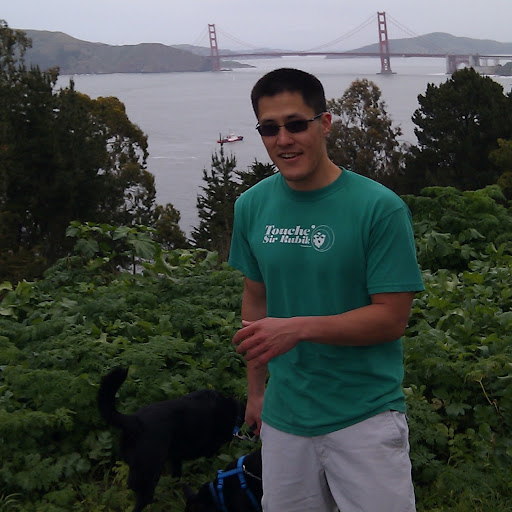
John Lin
Education:
Cathedral High School, Wabash College, Indiana University-Purdue University Indianapolis - Computer Electrial Engineering
Tagline:
More bandwidth!
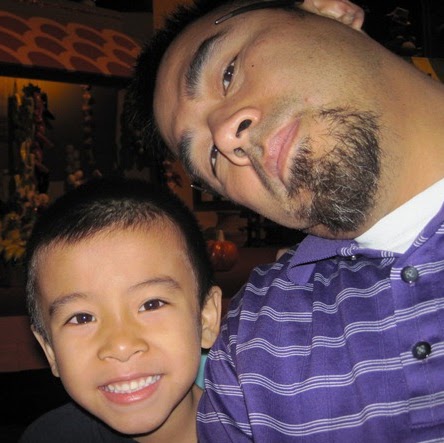
John Lin
Work:
Blackboard Inc. - Manager, Integration Services
Education:
Georgia Institute of Technology - Electrical Engineering

John Lin
Bragging Rights:
半馬完成,初馬準備中...
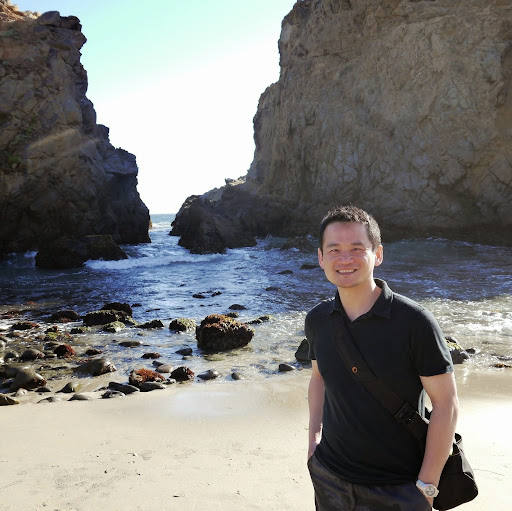
John Lin
Lived:
Taipei City, Taiwan
Walnut, CA
Singapore
Walnut, CA
Singapore

John Lin (Tinybear)

John Lin
Work:
Lefu Catering Mgt. Co. Ltd. - General Manger
Camus
Yuanliu
Camus
Yuanliu
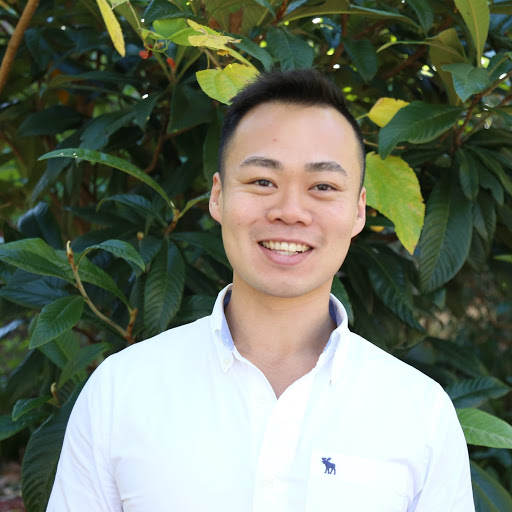
John Lin
Work:
Deepend Sydney - Assistant Accountant (2009)
Classmates

John Lin
view sourceSchools:
Kirksey High School Kirksey KY 1968-1972
Community:
Star Killebrew, Pat Murdock

John Lin
view sourceSchools:
George Mason High School Falls Church VA 1980-1984
Community:
Barbara Bates, Ronald Sherrill

John Lin
view sourceSchools:
Baldwin Stocker Elementary School Arcadia CA 1989-1993
Community:
Cheryl Barnard, Brian Smith, Jaime Oldham, Lee Ellingson, Nancy Ballance

John Lin
view sourceSchools:
Ruth Grimes Elementary School Bloomington CA 1987-1991
Community:
Lisa Werner, Michelle Virgin

John Lin
view sourceSchools:
Lakeside Middle School Irvine CA 1996-1997
Community:
Ernestine Sesmas

John Lin
view sourceSchools:
Faria Elementary School Cupertino CA 1982-1988, Kennedy Junior High School Cupertino CA 1988-1990
Community:
Derek Rick

John Lin
view sourceSchools:
Christchurch School Christchurch VA 2002-2006
Community:
Louis Randall, Andrew Murphy, Kevin Allen, Caswell Cooke, Ricky Rodriguez

John Lin
view sourceSchools:
Windsor Secondary High School Vancouver Saudi Arabia 1994-1998
Community:
Jamie Amos, Craig Saunders
Youtube
Flickr
Plaxo

John Lin
view sourceIC Intracom

John Lin
view source
John Lin
view sourceLas Vegas, NVVice President Development at Echelon Resorts

john lin
view sourceThe Emerald

John Lin
view sourceShanghai, China

John Lin
view sourceTaiwan

Leea John Lin
view source
John Matthew Lin
view source
John C Lin
view source
John Lin Aung
view source
John Yihong Lin
view source
John Lin Valles
view source
John Q Lin
view source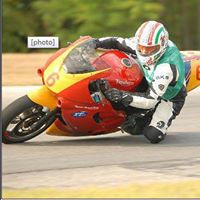
John Lin Buchanan
view sourceGet Report for John Hong Lin from Parker, CO, age ~60













